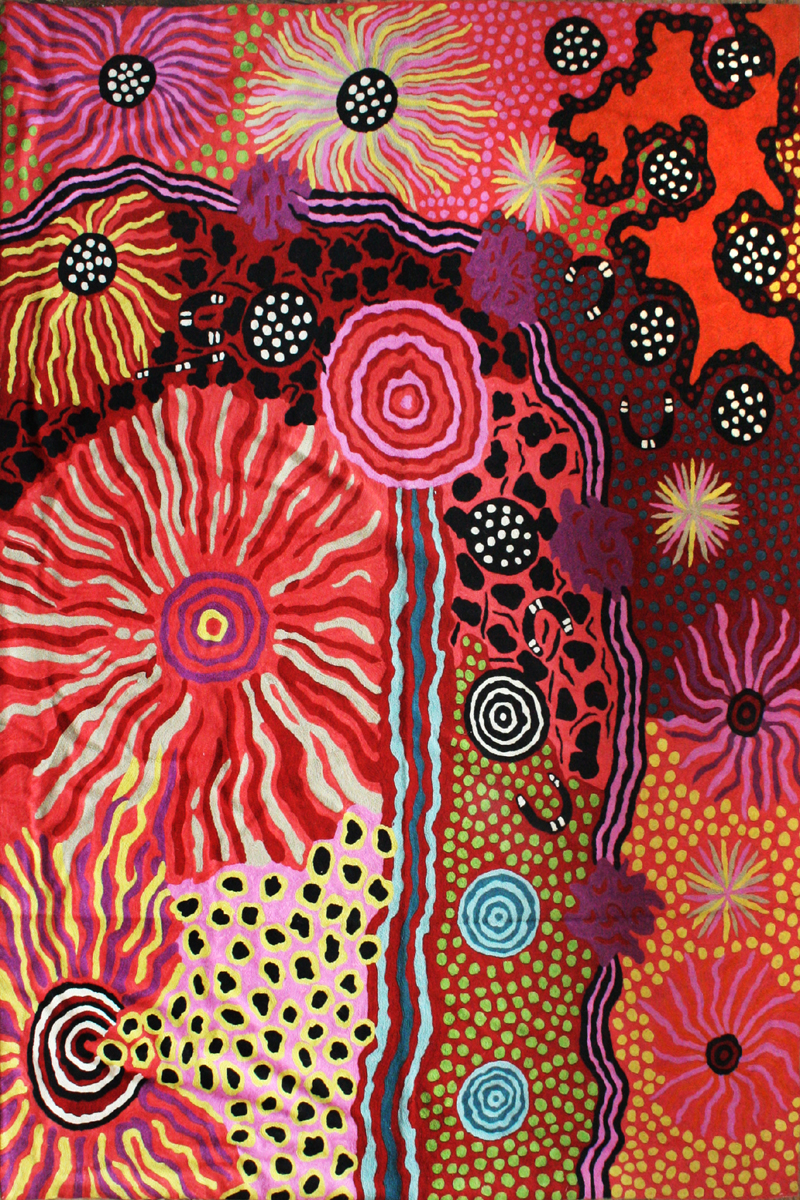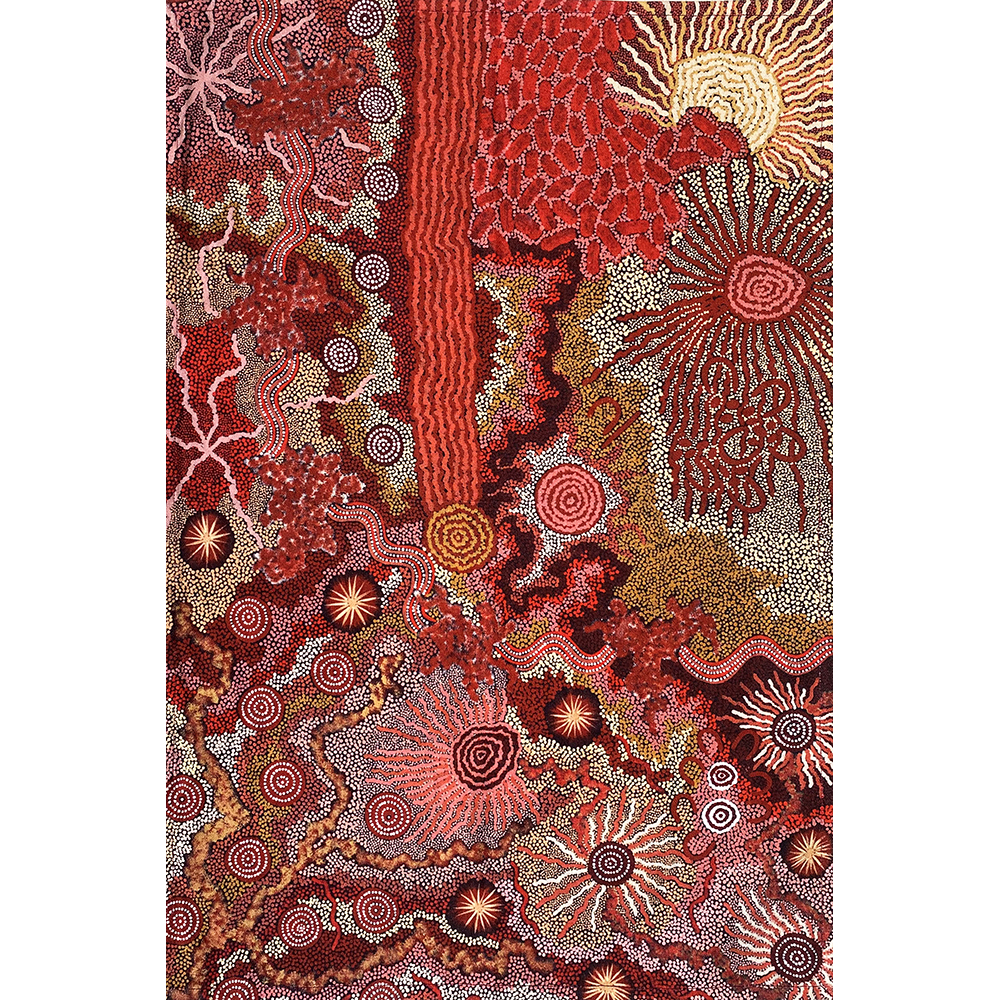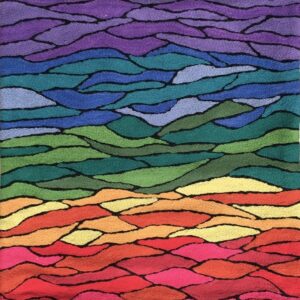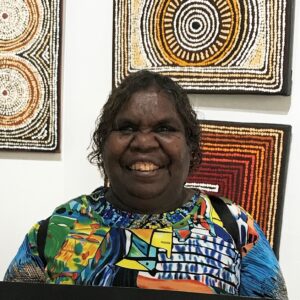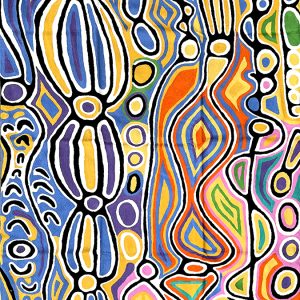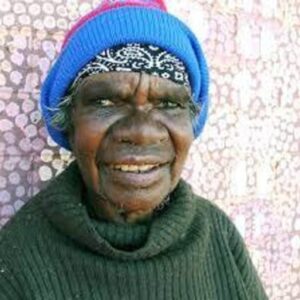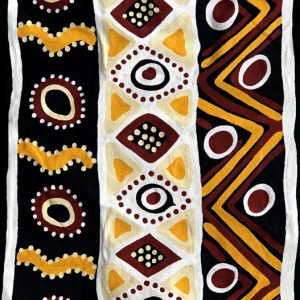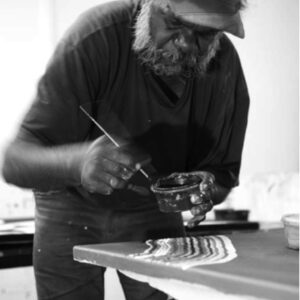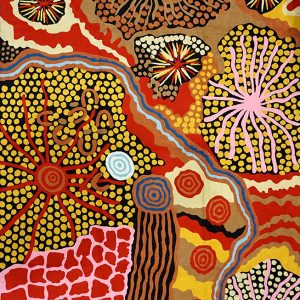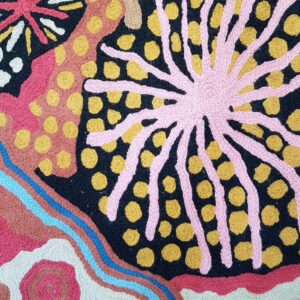Description
Composition: Hand dyed wool and cotton
Size: 182 x 244 cm (60 x 96 inches)
Features:
- Hand embroidered/chain-stitched
- All natural fibres – embroidered wool on cotton canvas
- Fair Trade certified
- Limited edition – individually numbered
- Certificate of Authenticity supplied with each kilim
- Royalties paid to the artist/family on every sale
- Hard wearing
- Back has non-slip surface
- Each kilim has flap on the rear for ease of hanging with dowel/rod
- Matching cushion covers are also available
Chain-stitched kilims are a traditional rug/soft furnishings making technique from Kashmir. As people sat on the floor they were both homewares and decoration. As many artworks are painted on the ground or 3D surfaces/bodies most of the images do not have a set orientation so can also be hung portrait or landscape if preferred.
About the design: Dry Season Story
This is a very detailed painting that describes a dry time of year in Damiens homeland, Mount Liebig. The painting illustrates aspects of landscape and culture around that area that was told to Damien by his great-grandmother and great- grandfather. There are women sitting with their children collecting bush potatoes (the mass of red shapes at the bottom of the painting). The women are talking and getting ready for a ceremony. There is one man (wati) sitting down with his waru (spear). The spinifex is dry and so the man is walking around making bushfires. He is a good man, he is undertaking controlled burnings so the spinifex burns up and then good fruits can grow after this. There are several symbols in this painting. The small sun-like symbols represent womens body painting these are the images the women are painting on each other as they sit down ready for inma traditional ceremony. There is a dry creek bed running through the painting (in red and white), and there are cracks in the ground and claypans. There are also dried rockholes (tjukula), and next to them are tali tali sandhills.
Artists: Damien & Yilpi Marks
Damien Marks was born in Haasts Bluff in the Northern Territory in 1967. He later moved to Papunya with his family where he was taught painting by the well-known Clifford Possum, Billy stockman and Uta Uta Jangala who taught him dreamtime stories at an early age. Damien is now a respected Ngurratjuta artist and is married to highly talented artist Yilpi Marks.
Yilpi Marks was born in Ernabella in 1969. She was taught dreamtime stories by her grandparents and her parents. Her mother’s name is Tjulkiwa Atira-Atira and her father’s, Michael Atira-Atira (deceased). Both parents being very talented artists have their artworks held by the State Gallery of South Australia and the NGA.
Yilpi married Damian Marks and they lived in Damien’s country near Papunya before moving to South Australia. Together they often paint the ceremonies conducted by their people. Their paintings detail the ceremonial body paint designs, the ceremonial tools and other bodily adornments. They paint in a method typical of the Western Desert painters using dots to construct intimate knowledge the landscape, painted from an aerial view.
They now reside in Alice Springs and paint together regularly. They are passionate about preserving their culture through their artworks.
CARE INSTRUCTIONS:
Do not put place/use in direct sunlight or colors may fade. To clean – dry cleaning recommended. Can be ironed on a wool steam setting.
About the Better World Arts chainstitch kilim products
These beautiful, unique textiles are a cross-cultural collaboration combining Aboriginal designs and traditional Kashmiri rug-making techniques. Chain stitched, using hand dyed wool, each is a completely handmade piece. A more empowering way to work, this brings many direct benefits to the artists’ and their community. Control and ownership of intellectual property are also maintained. Purchase of these products guarantees a direct return to the Aboriginal artist’s family and their community.

